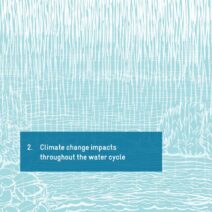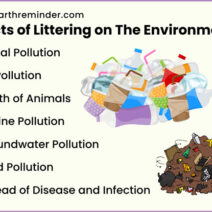In the grand tapestry of Earth’s existence, climate change emerges as an unmistakable thread, pulling at the seams of our cherished environment. This alteration in climatic conditions is no ephemeral phase; it represents a profound transformation woven into the very fabric of our planet. The manifestations of climate change echo like an ominous symphony, resonating across the globe. Let us delve deeper into how the scientific community has elucidated this pressing phenomenon through seven compelling signs that affirm the reality of climate change.
1. Rising Temperatures
The most immediate and tangible sign of climate change is the steady increase in average global temperatures. Over the past century, the planet’s surface temperature has escalated by approximately 1.2 degrees Celsius (2.2 degrees Fahrenheit). This once trivial alteration now bleeds into our daily lives. The warmth that envelops us is not merely a pleasant memory of summer days—it’s a harbinger of shifting ecosystems, altered weather patterns, and less predictable seasonal rhythms. This thermal uptick ignites a cascade of consequences that ripple through both human existence and natural systems.
2. Melting Ice Caps and Glaciers
In the grand theatre of the Arctic and Antarctic, the ice caps are the stars—noble sentinels of our planet’s climate stability. However, their magnificent presence is rapidly dwindling. Satellite observations reveal alarming reductions in the volume of polar ice and glaciers worldwide. The Arctic ice, which has seen a drastic reduction in summer extent, serves as a poignant reminder of our transgressions against nature. As the crystalline structures melt, sea levels rise, threatening coastal communities and ecosystems with inundation.
3. Rising Sea Levels
Connected to the plight of melting ice is the inexorable rise of sea levels, an uncanny specter of climate change repercussions. As oceans warm, they expand—displacing water and inundating previously dry land. Coastal cities, once vibrant hubs of human activity, now face the prospect of becoming sunken relics; climate refugees may soon seek solace in territories where land remains unclaimed. This gradual encroachment of seawater into urban life whispers a foreboding narrative of loss and adaptation.
4. Ocean Acidification
As people exhale carbon dioxide, the oceans embrace it as if it were a long-lost kin. This embrace, however, has a sinister undercurrent. The oceans absorb approximately one-third of carbon emissions, leading to a biochemical transcription of our actions known as ocean acidification. This process alters the pH balance of seawater, profoundly affecting marine life, particularly organisms like corals and shellfish that rely on calcium carbonate to construct their homes. As vibrant reefs turn to ghostly skeletons, the intricate web of marine biodiversity unravels, threatening the livelihood of those who depend on the ocean.
5. Extreme Weather Events
In recent years, our planet has unleashed unprecedented extremes, offering up a staggering catalogue of climate-related disasters. Heatwaves scorch once temperate regions, hurricanes gather ferocity, and droughts extend their relentless grip on agricultural lands. These volatile patterns are not mere coincidences; they are rooted in the climactic disruptions wrought by increased greenhouse gas concentrations in our atmosphere. The harrowing impacts are felt by vulnerable populations, who find their resilience tested in ways previously unimaginable.
6. Shifts in Biodiversity and Habitats
The natural world, an intricate lattice of ecosystems, is reacting to the climate crisis with profound shifts in biodiversity and species distribution. Many flora and fauna, unable to adapt rapidly enough to the changing environment, face a stark choice: migrate to cooler regions or face extinction. This frantic dash for survival alters habitats and the symbiotic relationships that have endured for eons. The delicate equilibrium of nature is escalating into upheaval as species find their ancestral homes growing inhospitable.
7. Increased Carbon Dioxide Levels
The telltale signature of climate change is embedded within the atmosphere itself. Measurements of carbon dioxide (CO2) levels in ice cores reveal a grim trajectory—levels have surged to unprecedented heights, surpassing 400 parts per million. This atmospheric burden manifests in the warming of the planet and the resultant catastrophes. The correlation between industrial activities and this increase is undeniable, illuminating the direct impact of human ingenuity turned folly.
In conclusion, the evidence of climate change is as undeniable as it is disconcerting. Each sign weaves a complex narrative, compelling us to acknowledge our intertwined fate with the planet. If we hope to rewrite this narrative, it is imperative to embrace sustainability and take resolute action. Just as nature oscillates between harmony and chaos, we too must find our equilibrium to create a future that honors the delicate balance of life on Earth. The reality of climate change is not just a scientific concern; it is a clarion call for collective consciousness, urging humanity to rise in stewardship for our shared home.




